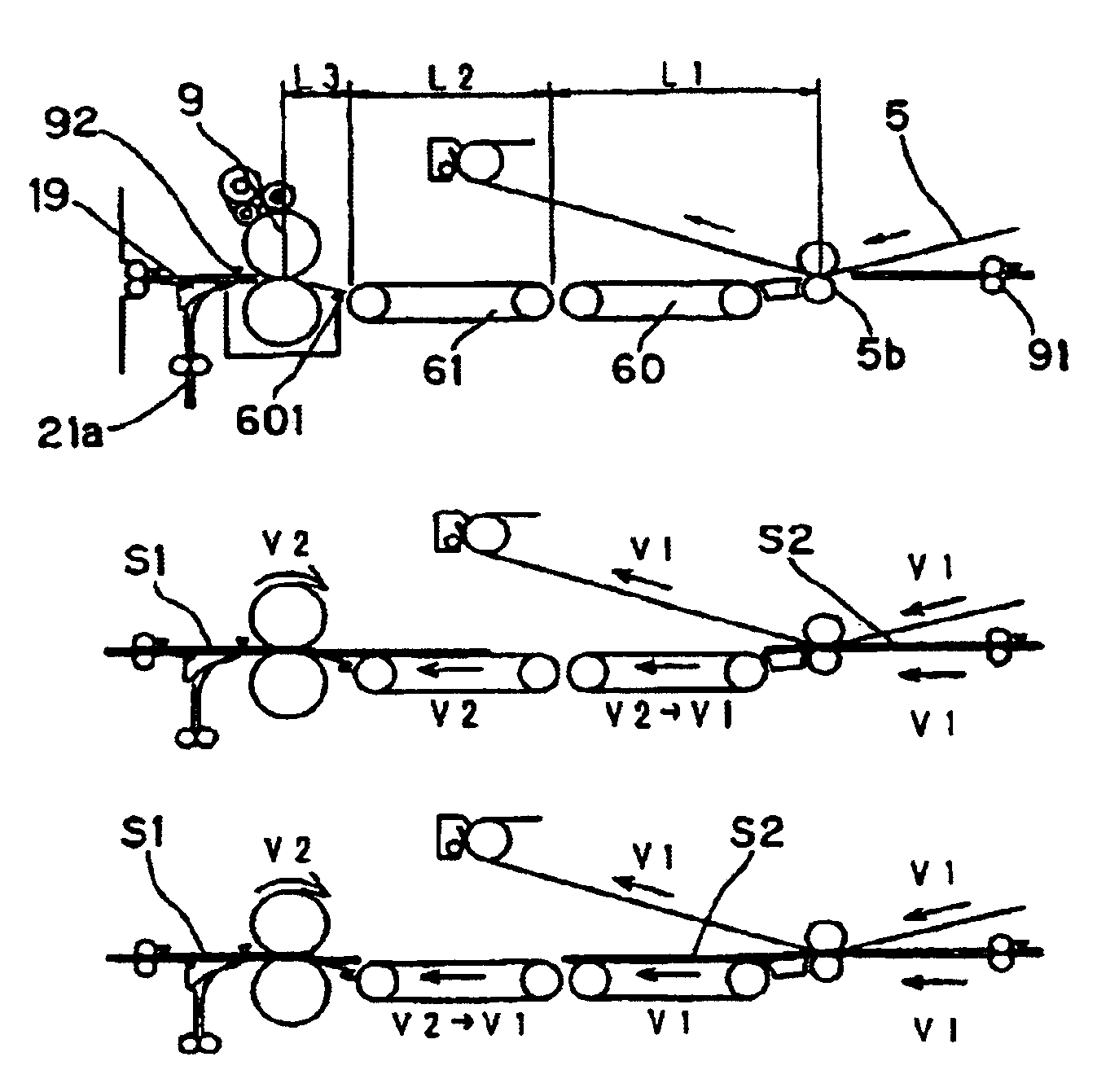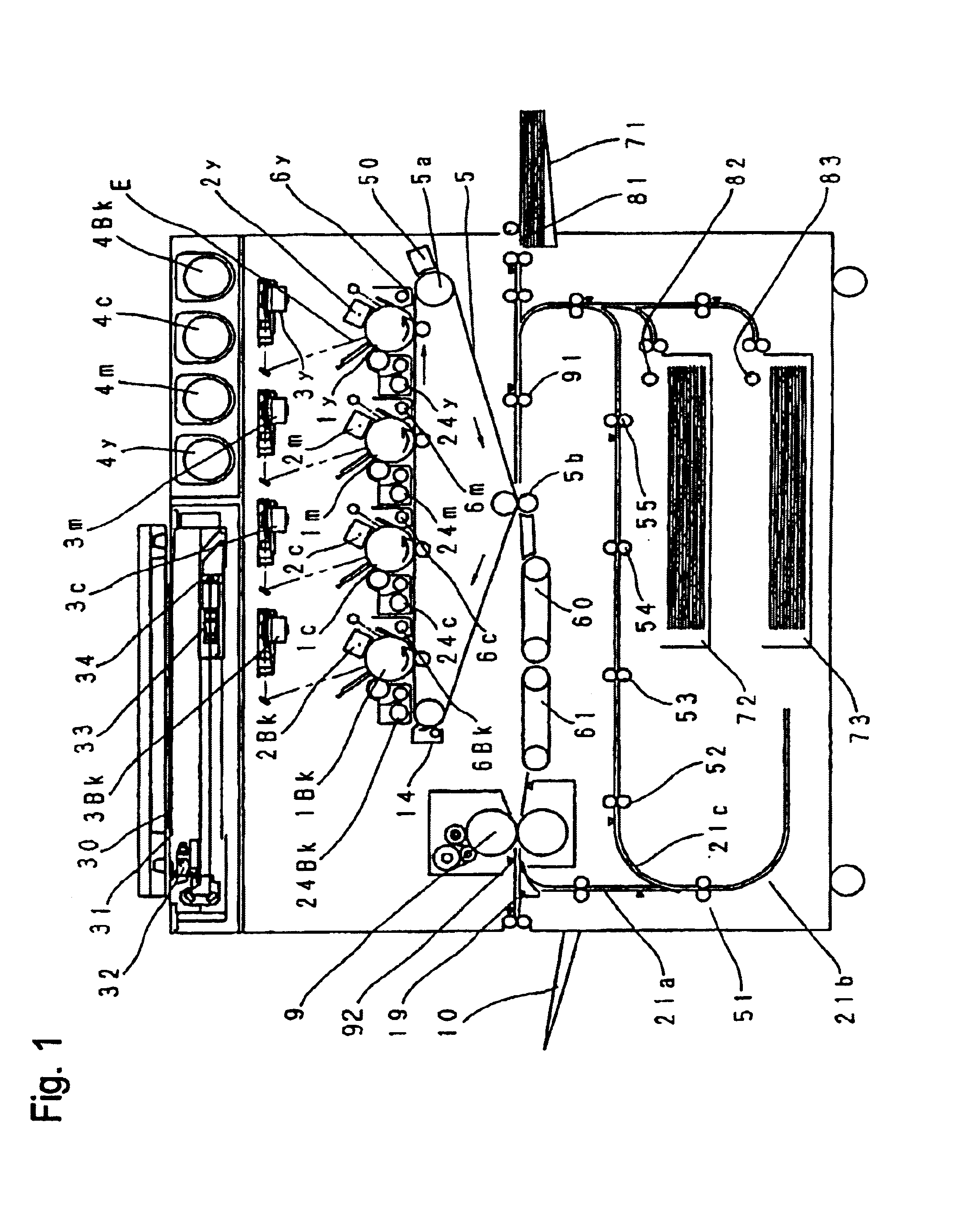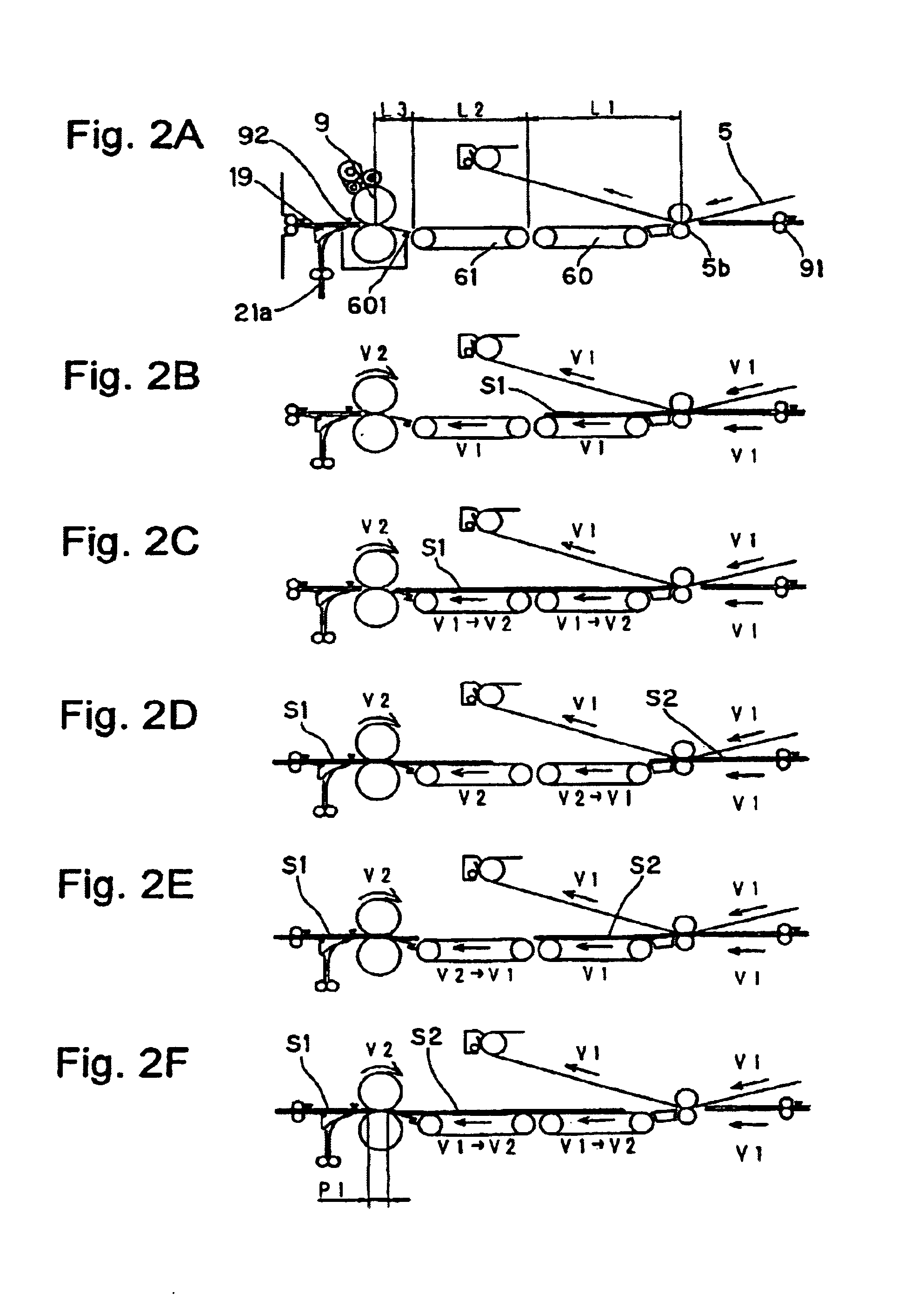Image forming apparatus including plural conveyor units with conveyance path length/conveyance speed relationships
a technology of image forming apparatus and conveyor unit, which is applied in the direction of electrographic process apparatus, thin material handling, instruments, etc., can solve the problems of reducing the fixing speed, deteriorating image forming efficiency, and widened sheet spacing, so as to shorten the image forming time period of the first sheet without deteriorating image quality. , to achieve the effect of improving image forming efficiency
- Summary
- Abstract
- Description
- Claims
- Application Information
AI Technical Summary
Benefits of technology
Problems solved by technology
Method used
Image
Examples
first embodiment
[0050](First Embodiment)
[0051]A first embodiment will be described with reference to FIG. 1 to FIG. 5.
[0052]The first embodiment of the invention will be described in detail with reference to the accompanying drawings. FIG. 1 presents a schematic sectional view of a full-color image forming apparatus according to the first embodiment.
[0053]The apparatus of FIG. 1 is a copying machine, which is provided with a digital color image reader and a toner container at its upper portion and a digital color image printer at its lower portion. This copying machine is of an intermediate transfer type having four image formation units.
[0054]In the reader, a document 30 is placed on a document glass plate 31 and is scanned while being exposed by an exposure lamp 32. An optical image reflected from the document 30 is focused by a lens 33 into a full-color CCD sensor 34 to produce a color-separated image signal.
[0055]This color-separated image signal is processed through an amplifier circuit by a v...
second embodiment
[0126](Second Embodiment)
[0127]A second embodiment of the invention will be described with reference to FIG. 6. The copying machine of this construction is not the intermediate transfer type unlike the first embodiment but the type, in which the toner is transferred directly to the sheet from the photosensitive drum acting as the image bearing member.
[0128]The remaining constructional members such as the reader are identical in construction and function to the copying machine of the first embodiment. The sheet passes through the four image formation units while being electrostatically adsorbed by the transfer belt 5 and is conveyed with the toner transferred thereto.
[0129]Here, the construction of the pre-fix conveyor portion may be identical to that of the first embodiment, if it is considered that the start point of the distance L1 is located not at the transfer unit of the fourth station, i.e., at the position of the transfer point 5Bk, through which the sheet trailing end passes...
PUM
 Login to View More
Login to View More Abstract
Description
Claims
Application Information
 Login to View More
Login to View More - R&D
- Intellectual Property
- Life Sciences
- Materials
- Tech Scout
- Unparalleled Data Quality
- Higher Quality Content
- 60% Fewer Hallucinations
Browse by: Latest US Patents, China's latest patents, Technical Efficacy Thesaurus, Application Domain, Technology Topic, Popular Technical Reports.
© 2025 PatSnap. All rights reserved.Legal|Privacy policy|Modern Slavery Act Transparency Statement|Sitemap|About US| Contact US: help@patsnap.com



